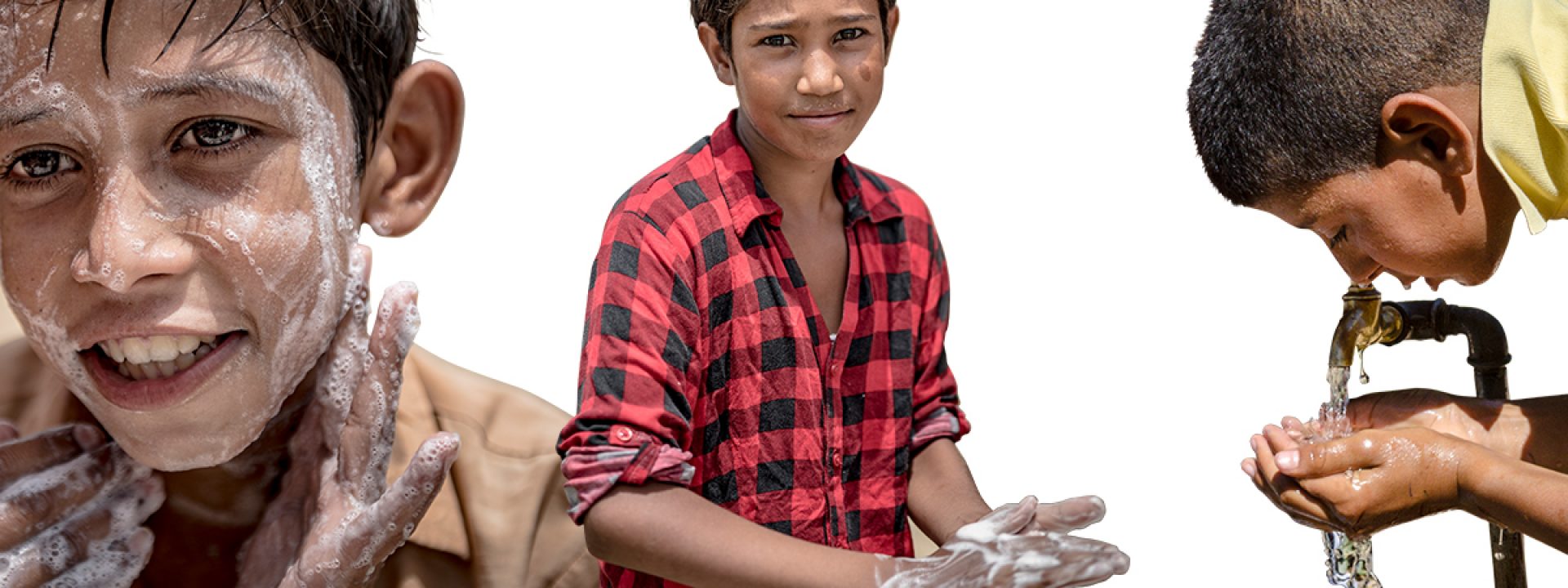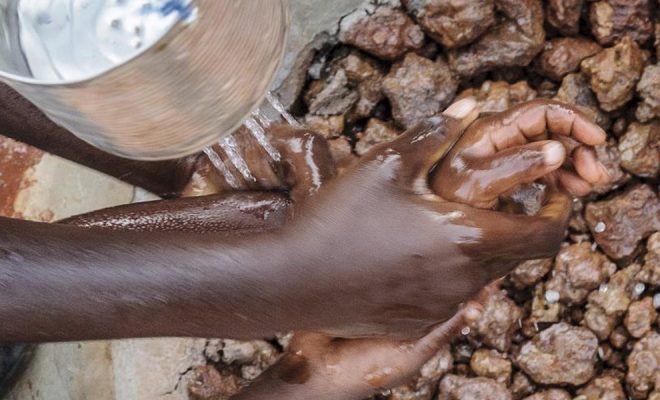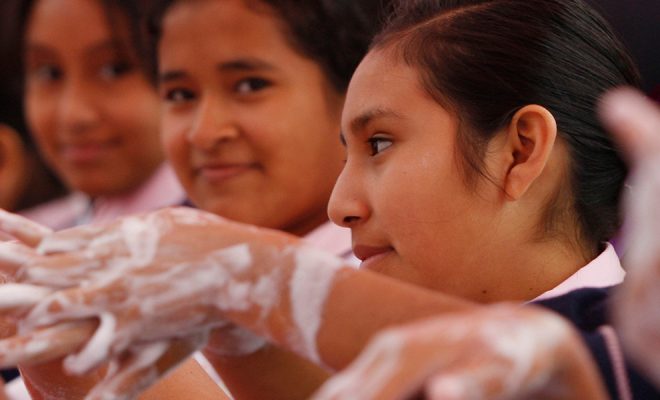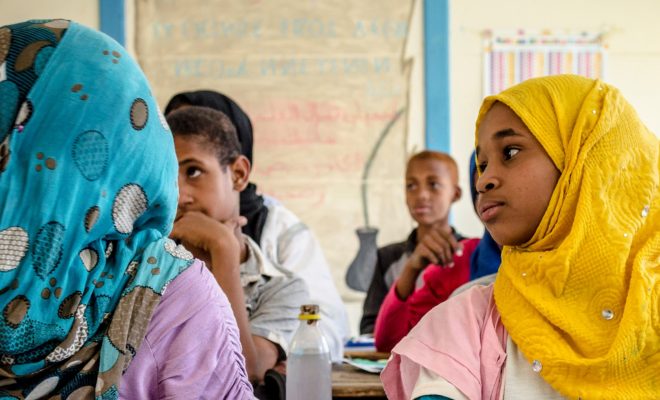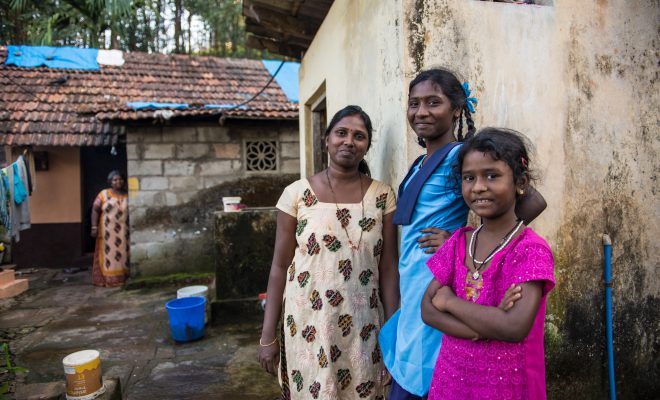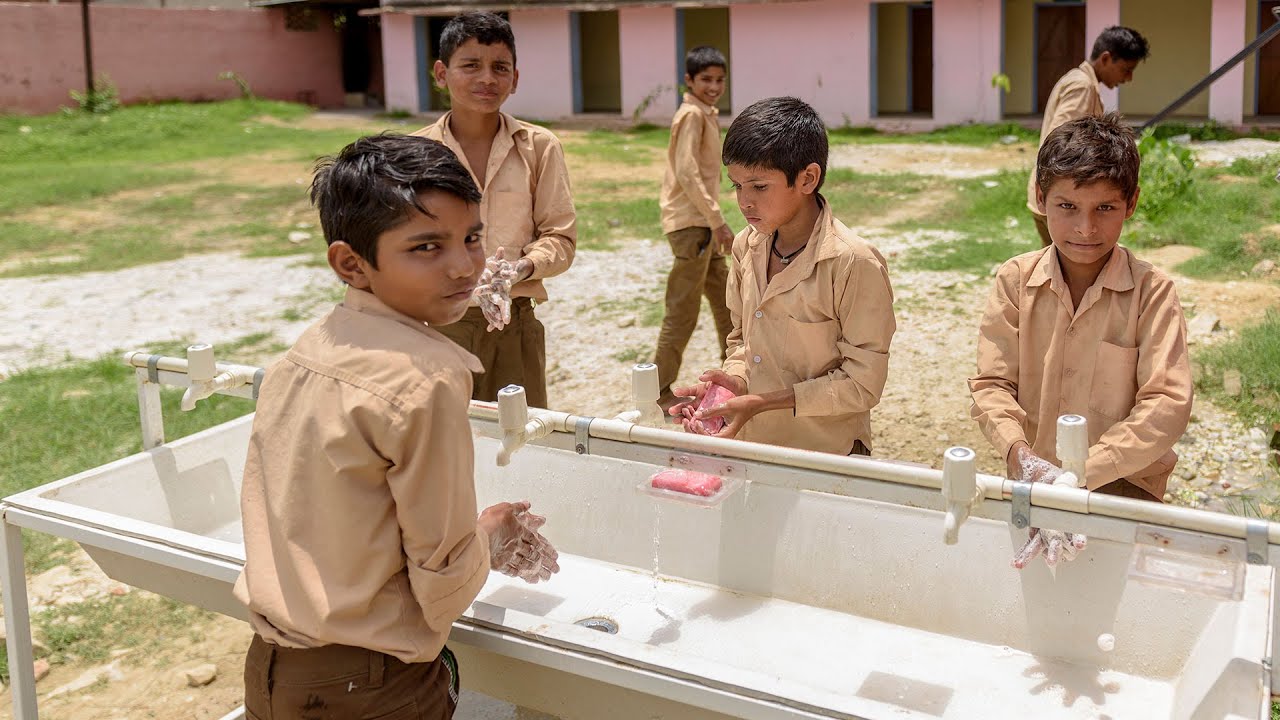
After the water access and sanitation vocabulary, we will analyze the terms used by the UN to define hygiene in SDG 6.
The specific mention of hygiene is more explicit in the SDGs than in the previous Millennium Development Goals (MDGs). In addition, the Covid-19 pandemic has also led to the revision of the handwashing concept in the assessment criteria of the Joint Monitoring Programme for Water Supply, Sanitation and Hygiene (JMP), commissioned by the UN to the WHO and UNICEF to monitor and track these SDG 6 targets.
In the eight targets of SDG 6, hygiene is included in the same one as sanitation: target 6.2. In 2018, the JMP published global data on access to water and sanitation, adding hygiene for the first time in 2019.
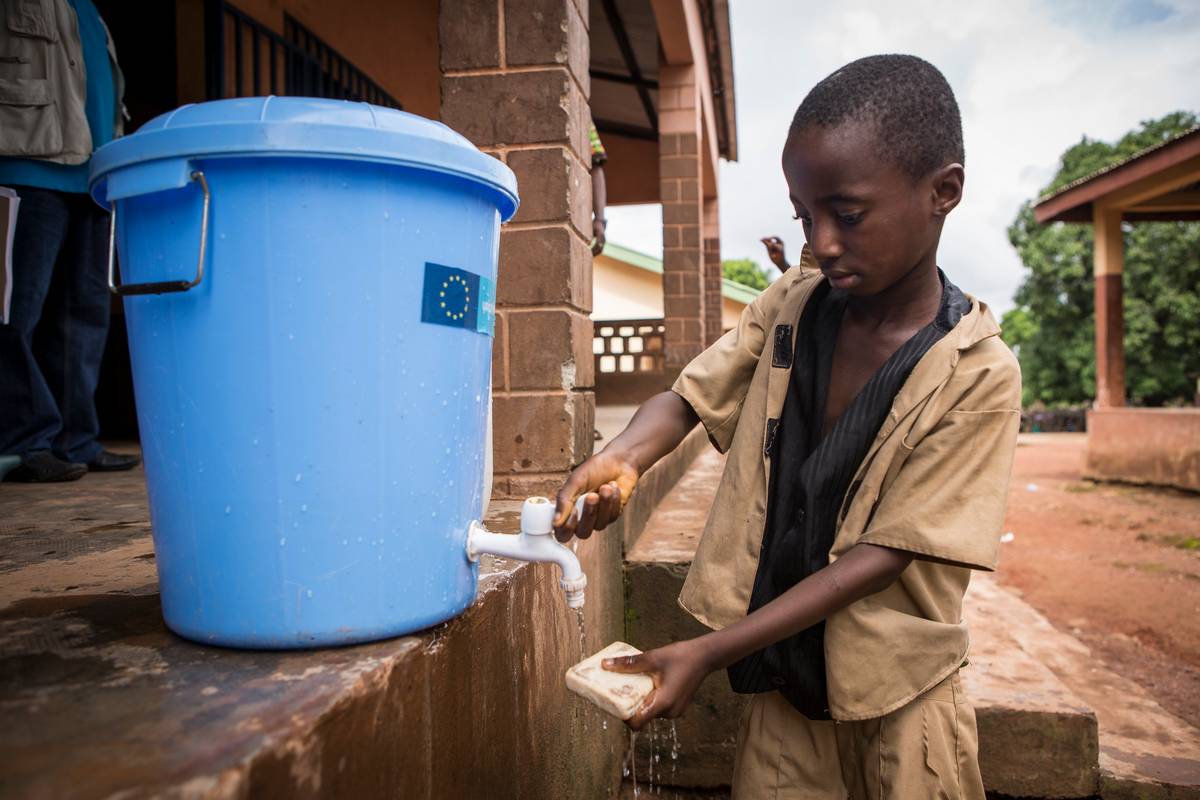
The terms describing hygiene facilities are simpler than those for access to water and sanitation; they refer to the existence or lack of handwashing facilities and the availability of clean water and soap. © EU/ECHO/Jonathan Hyams.
The hygiene vocabulary of target 6.2.
Achieve access to adequate and equitable sanitation and hygiene for all and end open defecation, paying special attention to the needs of women and girls and those in vulnerable situations.
The terms that refer to sanitation in general were explained in our previous article What do we mean when we talk about sanitation. Let us take a look at the terms that define “hygiene” and the new indicators for monitoring established by the JPM.
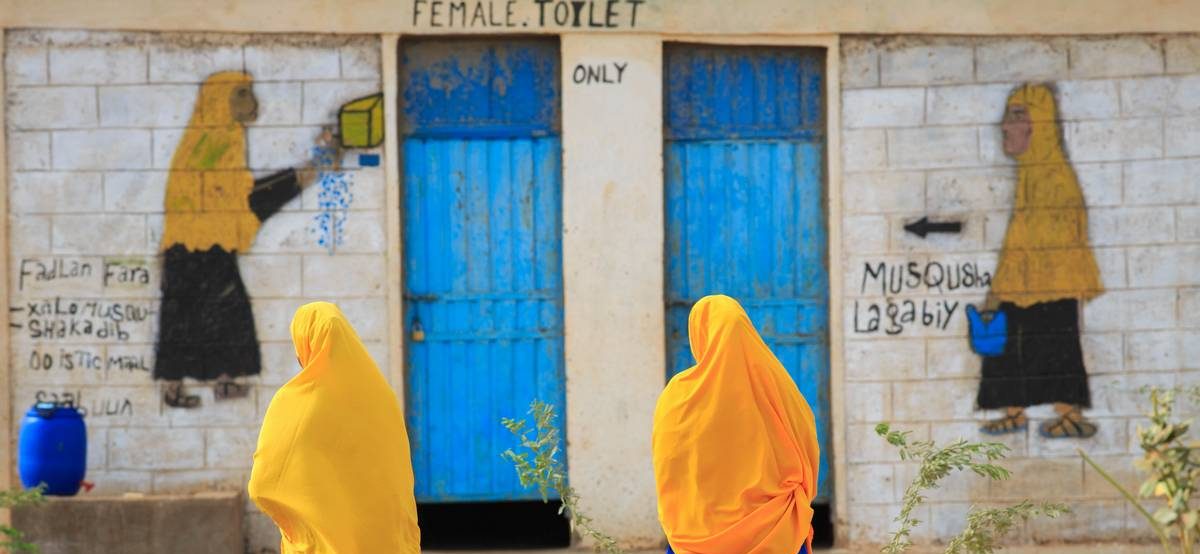
Achieve access to adequate and equitable sanitation and hygiene for all and end open defecation, paying special attention to the needs of women and girls and those in vulnerable situations. © UNICEF Ethiopia.
Hygiene is defined as “the conditions and practices that help maintain health and prevent spread of disease including handwashing, food hygiene, and menstrual hygiene management.” This concept refers to everyday practices highly influenced by culture, social hierarchies and families’ income level. As with sanitation, equity concerning gender, age, and disabilities of any kind is of particular importance. On the other hand, the attainment of the hygiene targets is logically dependent on those of sanitation: they are intrinsically linked to the existence of adequate facilities for safe disposal of feces (see sanitation vocabulary), as it is clear that little is gained by merely washing hands if adequate latrines are not available and open defecation is not eradicated.
The key indicator: Who has handwashing facilities with soap and water at home?
Similarly to target 6.1 regarding access to water, the JPM created a new key indicator in 2017 to monitor target 6.2 regarding hygiene: “Proportion of population using safely managed sanitation services, including a handwashing facility with soap and water.” From highest to lowest quality, the handwashing service can be: basic, limited, or non-existent.
Let us take a closer look at each one of them and who in the world uses them:
Basic
An adequate handwashing facility at home with the availability of clean running water and soap.
According to the JPM, in 2020, 5.513 billion people worldwide, more than 70% of the world’s population, could wash their hands adequately at home. However, in rural areas this proportion decreases: only 60.35% have running water and soap to be used when needed.
Limited
The service is limited when people do not have soap or water to wash their hands properly, despite having facilities to do it.
According to the JPM, in 2020, over 1.5 billion people, more than 20% of the world’s population, could not meet their hygiene needs as they did not have water or soap. There are two fundamental causes: the lack of running water and soap in their village or town and/or the lack of income of the family unit; both occur in contexts of poverty, although the use of soap is also affected by cultural factors that keep people away from this hygienic element. These limitations also extend to showers and usually to general household cleaning.
No facilities
According to the JPM, some 670 million people lacked any facility in 2020, making it impossible for them to engage in any healthy hygienic practice. Rural areas, with 369 million, are home to the majority of these people worldwide. It is a problem that causes millions of deaths and chronic diseases, especially among minors, due to all kinds of infections and the action of pollutants that cannot be eliminated from the living environment.
Globally, if we consider the sum of those who have a limited service and those who have no facilities at all, we find that 2.27 billion people cannot wash their hands properly at home. This represents an improvement to 2018 data, which estimated that 3 billion people lacked facilities.
Some countries present unacceptable data that radically distance them from the attainment of the SDGs, with Africans being among the most disadvantaged. More than 85% of the population in Rwanda lacks any kind of facility; followed by Togo, with 74%, and Guinea-Bissau with 69%. In India, a country that is one of the benchmarks in the path towards the Agenda 2030, more than 440 million people do not have access to complete personal hygiene because of limited or non-existent facilities.
The testimony of our projects
As the SDG 6 targets point out, the projects we have developed all around the world have allowed us to see the direct relationship between hygiene and sanitation. In those areas lacking sanitation, the lack of handwashing facilities is usually endemic. In all these projects, the installation of latrines is carried out simultaneously with the installation of hand-washing basins with safe running water, which is essential to complete the health function and provide users with a hygienically complete facility. You can find these specifications in the Manual for the construction of latrines and wells, which reflects our experience in sanitation projects worldwide.
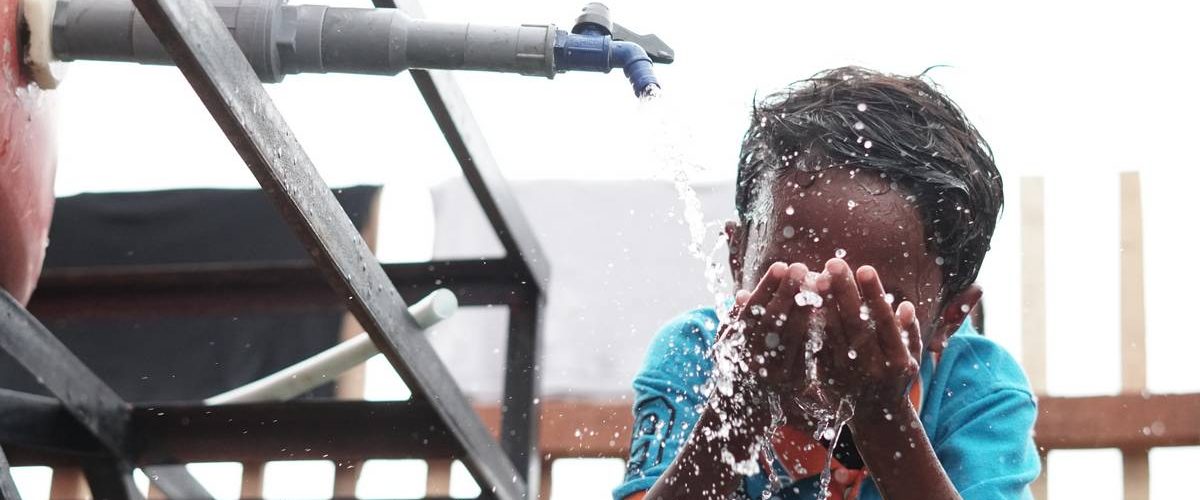
As the SDG 6 targets point out, the projects we have developed all around the world have allowed us to see the direct relationship between hygiene and sanitation. © Carlos Garriga/ We Are Water Foundation.
There are specific cases in which hygiene needs are particularly pressing. The migration drama, aggravated during the first phase of the coronavirus pandemic, is one of them. As soon as Covid-19 broke out, we took action in projects on the Tijuana border, in Mexico, on the border between Brazil and Venezuela, and in Mali. Thousands of migrants were stranded by restrictions and lockdowns in areas with poor health coverage made worse by the pandemic. In Mali alone, on the borders with Mauritania and Senegal, we helped more than 735,000 residents, health workers and community health workers, overwhelmed by Covid-19 and the endemic migratory flow in one of the world’s most impoverished regions.
For a clean and healthy school
But it is in schools where the lack of hygiene facilities is most serious for attaining the SDGs. According to the JPM, more than 462 million schoolchildren had no handwashing facilities in their schools in 2020.
Schoolchildren are the essential basis for spreading the culture of water, sanitation, and hygiene. In our projects, hygiene facilities are always linked to access to water and sanitation. We have helped more than 216,600 schoolchildren and teachers in the most neglected regions of the world. The experience gained in ten of the neediest countries confirms the importance of schools as hubs for developing health and social justice.
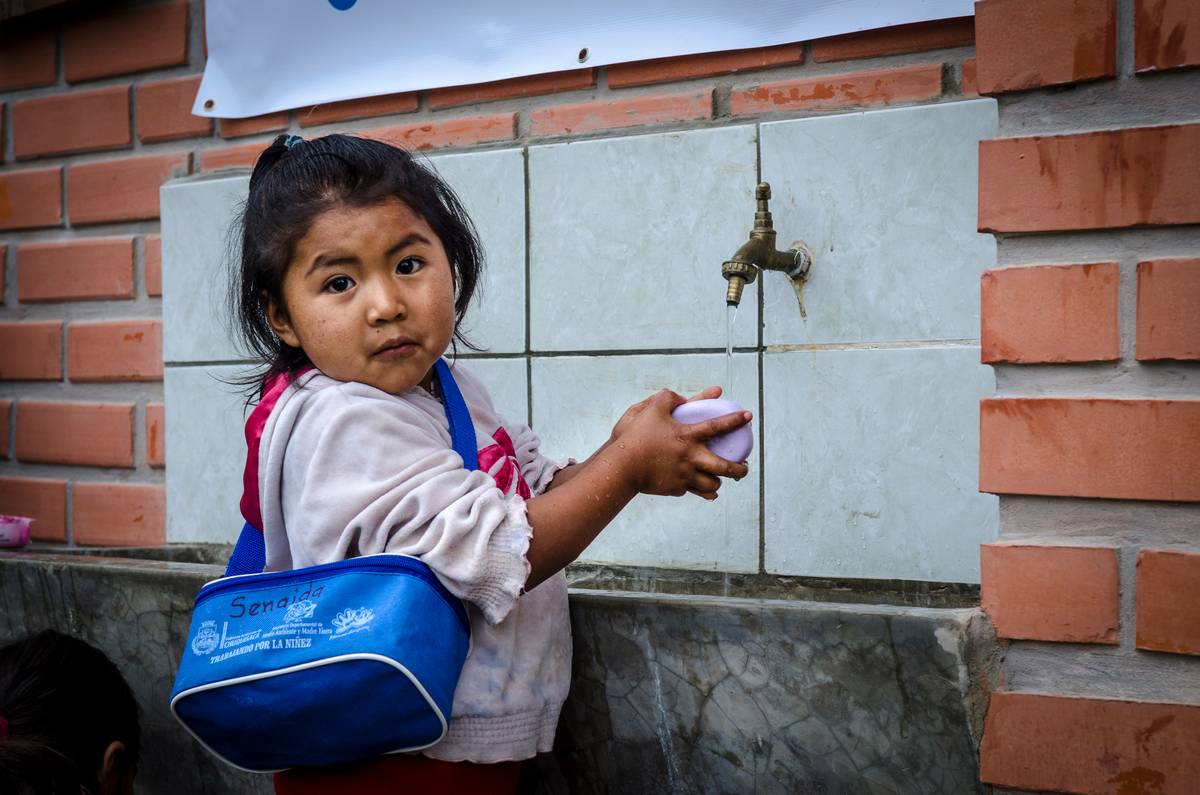
It is essential that schoolchildren learn not only how to wash their hands but also how to transmit this knowledge to their families and create a hygiene culture that is fundamental to leave poverty behind. © Carlos Garriga/ We Are Water Foundation.
It is essential that schoolchildren learn not only how to wash their hands but also how to transmit this knowledge to their families and create a hygiene culture that is fundamental to leave poverty behind. This is the best education for the millions of children for whom diarrhea can be fatal without adequate medical services. These projects have allowed us to provide hygiene to communities from very diverse cultures: schools in Chaco-Chuquisaqueño, in Bolivia; in Tombali, in Guinea-Bissau, one of the countries with the worst hygiene facilities in the world; in the Moroccan regions of Zagora, in the Eastern region and Sous-Massa, the latter being very vulnerable to the Covid-19 outbreak; a very similar situation to that of schools in the departments of Jinotega and Boaco in Nicaragua. In Mymensingh, in Bangladesh, there was also a lack of adequate access to water for schoolchildren and their teachers, and in the Northern region of Thailand, schools have an effective tool against diarrhea and cholera: clean water and soap. The Foundation projects have also enabled schoolchildren in Rajasthan and Tamil Nadu and Haryana in India to learn how to use the facilities and know the importance of handwashing before eating, cooking, handling food and after defecating.
Safe drinking water and adequate facilities are the basis of the success of any educational goal. The attainment of SDG 6 in schools is the basis for its achievement worldwide, the guarantee that the culture of hygiene will prevail to defend the health of humanity.


